When to plant peppers for seedlings: terms and rules
Bell peppers or sweet peppers are annuals and are quite picky about care. They appeared in Europe in the fifteenth century and quickly gained popularity among gardeners. The plant consists of an erect branched stem and simple petiole leaves. Depending on the variety, foliage can have different green shades and be located singly or in the form of a rosette. During the flowering period, axillary large flowers of white, purple or greenish shades are formed on the bushes. After flowering, fruits with seeds are formed. The color of vegetables can be yellow, red and green.
Reproduction of pepper occurs through seeds. Vegetables differ in toughness, therefore, seedlings are first grown, and then young plants are transplanted into open ground. With proper storage, seed material does not lose germination for up to four years. For germinating seeds and the development of seedlings, the temperature regime must be observed within 22-26 degrees. Initially, bell peppers were grown in warm regions, but over time, thanks to the efforts of breeders who bred cold-resistant varieties, it became possible to cultivate these healthy vegetables in the northern regions. A high-quality and bountiful harvest directly depends on proper care, a suitable variety and weather conditions.
Content:
- Popular varieties of bell peppers
- Planting pepper for seedlings: terms and rules
- Proper care of pepper seedlings
- When and how to transplant seedlings into the garden
- Secrets of Pepper Care and Harvesting
- What pests and diseases threaten the plant
Popular varieties of bell peppers
Varieties bell pepper fall into two categories:
- Varietal varieties that are capable of producing seed without degeneration of varietal traits.
- Hybrid - very rarely give seeds suitable for planting, but have increased resistance to diseases and temperature extremes.
According to the ripening period, Bulgarian pepper is divided into early, mid-early, mid-season and late. Early and mid-season varieties are especially popular.
The early ripe king of vitamins gives ripe fruits within 90-115 days from the moment the sprouts appear, if the weather is stable outside, the soil is sufficiently moist and the plant does not suffer from diseases. Gardeners prefer:
- "Triton" - gives a harvest of green peppers, which darkens when ripe. Fruits reach a weight of 140-160 grams.
- "Sweet banana", which gives yellow, mildly sweet peppers.
- "Igroku" - a high-yielding variety, perfect for small areas, has low compact bushes that do not require a garter.
- "To the Leader of the Redskins" - fruits with fleshy walls can weigh 200-330 grams. The variety is characterized by increased frost resistance, suitable for making salads and preserving.
- "Golden Calf" - large fleshy fruits weighing over half a kilogram.
- "Orange miracle" - thick-walled fruits have a color from yellow to orange, the weight of peppers reaches 300 grams.
- "Cardinal" - fruits of violet shades with walls of medium thickness.
- "Atlanta" - suitable for thickened planting, gives fruits of medium size, elongated conical shape.
Mid-season bell peppers can be harvested 125-140 days after sprouting. Most often, the fruits of this pepper have thick fleshy walls. It can be grown in cold areas without covering. The yield of such varieties is slightly lower than the earlier ones, and the peppers are medium-sized. Farmers prefer:
- "Arsenal" - red fruits from 90 to 130 grams.
- "Volovye ear" - red peppers weighing 115-135 grams are distinguished by good keeping quality.
- "Hercules" - fruits weigh 310 grams. The variety is immune to disease.
- "Bagheera" is a large-fruited variety. Peppers weigh 250-350 grams and are bluish-black with shades of red.
- "Orange" - gives juicy sweet fruits of yellow-orange shades, round shape and weighing up to 50 grams.
- "Alyosha Popovich" - the bushes do not need to be shaped and tied up. The variety yields medium-sized fruits, weighing up to 180 grams.
Many gardeners opt for hybrid varieties of bell peppers because of their disease resistance and high fertility. Such varieties do not suffer from recurrent frosts and are more unpretentious in care. Usually they prefer:
- "Atlantic F1"
- "To Cardinal F1"
- "Orange Wonder F1"
- "California Wonder F1"
- "Cockatoo F1"
It is best to choose varieties bred for cultivation in certain regions - this should be indicated on the seed package. You should also pay attention to the shelf life of the planting material - the fresher the seeds, the more guarantees that they will germinate.
Planting pepper for seedlings: terms and rules
Bell pepper seeds take a long time to germinate. The waiting period can take up to a month. Proceeding from this, sowing of seed material begins in winter, but at the same time, the thermophilicity of pepper should be taken into account. Good results are obtained seedlinggrown indoors.
It should also be remembered that sweet peppers do not tolerate transplants well and in order to take root in a new place, they will need special care and for a rather long time. But this procedure allows you to form a strong root system and increase the growth rate of the plant. Therefore, such bushes develop rapidly, outstripping their counterparts, sown directly into the ground.
Seed planting times vary and depend on the climate of the region, but they need to be sown before March.
Seed preparation for sowing is carried out in several stages:
- carefully examine and sort out, removing all damaged and underdeveloped
- treated with antifungal drugs
- incubated for half an hour in a fungicidal or manganese solution, previously placed in a tissue bag
- washed well, without removing from the bag, and placed in a growth stimulant solution for 12 hours
- wrap the seeds in a damp cloth, cover with cellophane and leave in a warm place for 1-2 weeks
- It is important not to overexpose the seeds, because they have very fragile roots that can be easily injured.
A seedling soil mixture is prepared by mixing garden humus, sand and garden soil in a 2: 1: 1 ratio, and then adding wood ash... The whole mixture is well calcined in the oven and microwave and placed hot in planting containers. Seeds should be planted in a still warm soil mixture.
For growing seedlings, you can use any container, but it is better to sow seeds in individual peat pots. This will facilitate open ground transplanting and minimize root trauma. Before filling the soil mixture, the containers should be treated with a manganese solution.
Seed sowing rules:
- Pepper seeds are buried in the pre-moistened soil by 1-1.5 cm. If the planting depth is less, then the seeds may dry out, and if deeper, the seedlings will be weak and elongated.
- The top layer of soil needs to be compacted a little.
- After seeding the seeds, the containers are covered with foil and left in a warm place.
- Seedlings should be opened and moistened periodically.
When sprouts appear, the shelter is removed and a cooler temperature of 17-19 degrees is provided. This will help the seedlings grow stronger and form strong roots.
Proper care of pepper seedlings
For the successful development of seedlings, a certain air temperature should be maintained:
- in sunny weather - 21-26 degrees;
- in cloudy weather - 17-19 degrees;
- at night - not lower than 17 degrees.
Drafts should not be allowed, and moderate watering spend in the morning using settled water. In the process of seedling growth, you need to add fertile soil mixture to the container and slightly loosen the top layer of soil.
For the best development of young plants, you need to ensure the duration of daylight hours - not 12 hours, if necessary, organize artificial lighting.
While the seedlings are growing, she needs to be given two fertilizing with complex mineral fertilizers or divorced bird droppings... It is important to carry out the second feeding 14 days before planting in the ground. At the same time, grown seedlings begin to accustom to outdoor conditions, exposing containers to the open air, gradually increasing the time.
Pepper roots are rather fragile and react painfully to any interference, therefore, it is undesirable to pick and plant the seedlings in a permanent place without removing them from the peat pots. But if the seedlings are grown in boxes of several bushes, then when the first pair of leaves is formed on the seedlings, they are dived into separate containers, deepening to the level of the cotyledon leaves.
When and how to transplant seedlings into the garden
Transplanting seedlings into the garden is carried out when stable warm weather is established. For the southern regions - in April-May, and for the northern regions - in June. The procedure should be carried out in cloudy weather or in the afternoon, because in the sun the plants wither and lose moisture, which makes rooting difficult. You should also consider other points:
The interval between the beds should be 35-45 cm, and between the bushes - 18-27 cm.
You should not plant peppers in the place where nightshade crops used to grow: tomatoes, eggplant, potato, because they are affected by the same diseases and harmful insects, the larvae of which live in the soil.
The place should be sunny and calm, as pepper needs warmth and cannot stand drafts. The soil should not be cold and heavy, therefore, it should be diluted with peat or humus into clay soil, well dug up and leveled. Planting holes fertilize mineral fertilizers with nitrogen, phosphorus and potassium.
Seedlings are carefully moved from containers to holes, keeping an earthen ball. As you fall asleep, the earth needs to be tamped and shed a little. After planting, the seedlings must be mulched with a peat layer and, if necessary, tied up with young bushes. If at night the air temperature is below 15 degrees, then the plantings should be covered.
Pepper Care Secrets and Harvesting
After the seedlings have taken root, pepper care needs a standard one, which consists in timely watering, weeding and loosening the soil, as well as feeding. But there are some secrets that are used by experienced gardeners to increase the yield of pepper:
- When the bushes begin to branch, they should be formed into 2-3 stems, removing the lateral growths - stepchildren.
- It is recommended to remove the central flower from the first flowering.
- When the plant reaches 25 cm, they should be pinched - remove the apical parts. This procedure allows you to correctly form a compact bush.
Such activities should be carried out in hot weather, in which the wounds dry out quickly, minimizing the risk of infection. The number of fruits should also be normalized. Depending on the variety, 18-28 peppers are left on the bushes.
Feed bell pepper twice a season with chicken droppings diluted in water and foliar fertilizing of complex mineral fertilizers is applied.It should be borne in mind that peppers are prone to cross-pollination, so you should not plant hot and sweet peppers nearby, otherwise the bell pepper will become a hot chili.
What pests and diseases threaten the plant
When cultivating pepper, farmers most often encounter:
- with rot
- fusarium
- anthracnose
- spotted wilting or bronzing
- fusarium wilting
- brown fruit
When fighting these diseases, you need to remove damaged plants, and treat the rest of the plantings with chemicals: fungicides and acaricides, following the instructions. As a preventive measure, sanitary measures are carried out, consisting in cleaning up last year's plant residues and disinfecting the soil layer.
Pests to watch out for: whiteflies, spider mites, naked slugs, aphids, larvae of click beetles and wireworms... All of them feed on the sap of plants and fruits, which can severely undermine the crop or destroy the plantation. To combat insects, systemic fungicides or folk remedies are used, in the form of soap, tobacco and ash solutions, and various traps are also placed on the site.
The main difficulty in cultivating bell peppers is to properly grow strong seedlings.
If gross mistakes are made in the form of violations of the temperature regime and excessive moisture, then the plants become coarse and lose productivity. But if you strictly follow the rules and recommendations of experienced gardeners, then it is possible to get high-quality seedlings and stable high yields of sweet peppers.
More information can be found in the video:



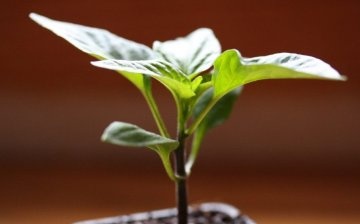
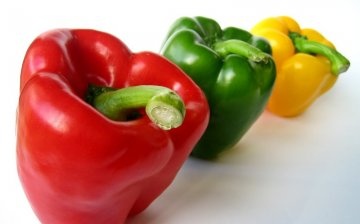



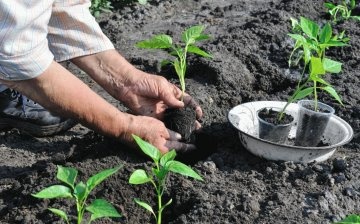
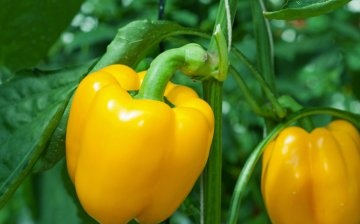
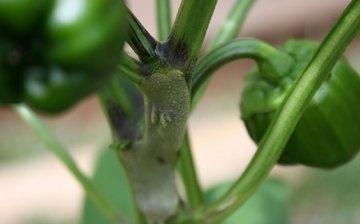











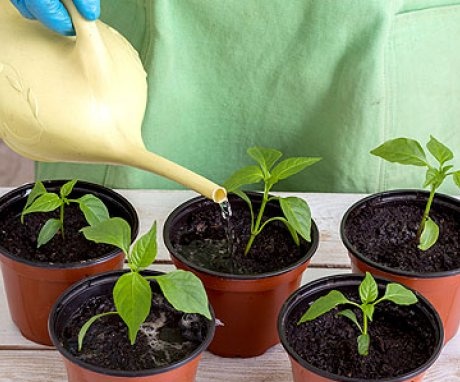

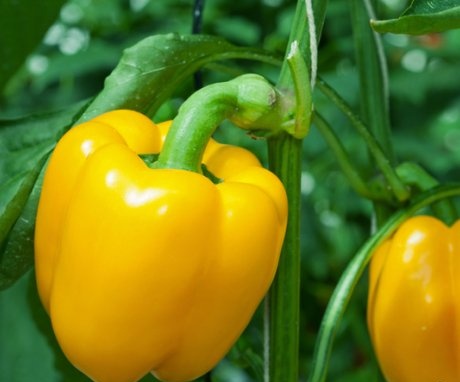
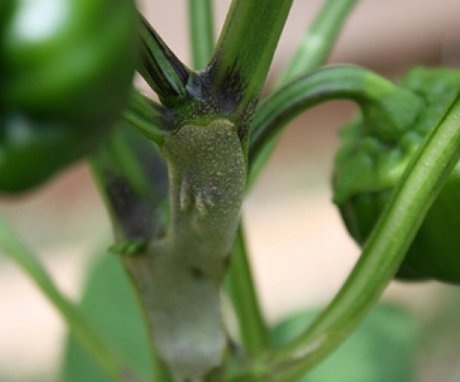
We always grow bell pepper seedlings in peat pots on the windowsill. We do not make it backlight, because in March there is already a rather long duration of the day, the seedlings grow strong, do not stretch out. We plant peppers in the garden together with pots at the beginning of May, usually, all the seedlings are taken.